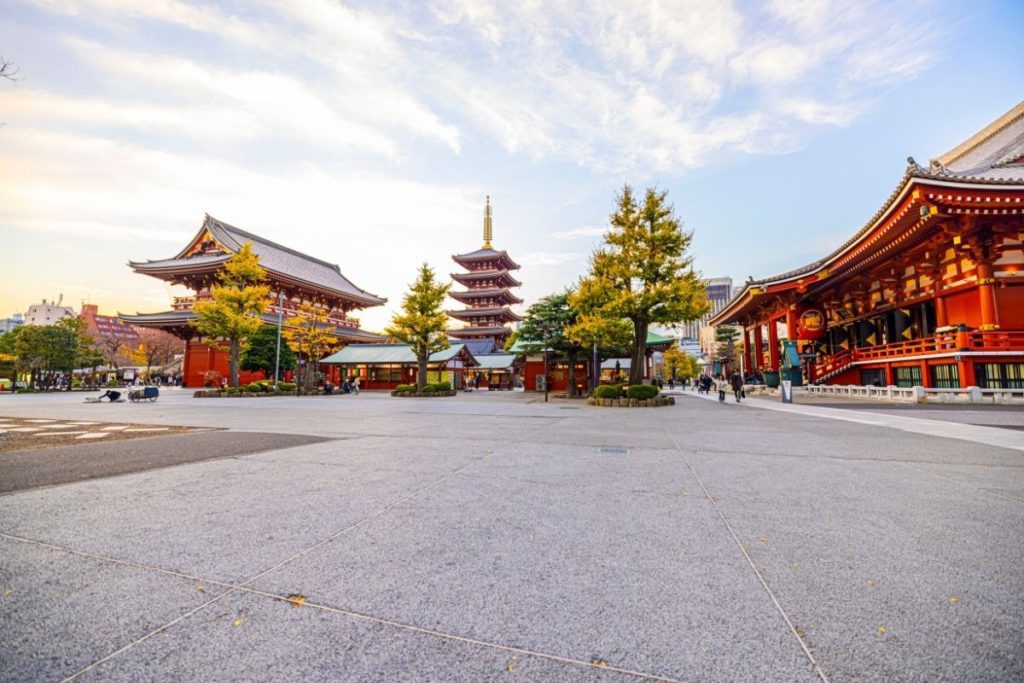Sensoji Temple is one of the ancient Buddhist Temples in the Kanto Region in Japan. It’s the most famous temple in Tokyo, rooted from being found Kannon Statue in the fishing nets in ancient times. The temple was destroyed in the bombing raids but was rebuilt again, which is now a tourist spot that attracts people. It’s now the center of local food, culture tourism, autumn leaves, and Cherry Blossom spots.
Table of Contents
Location:
Sensoji Temple is situated in Asakusa, an area of Taito City. Asakusa is famous for the Sensoji Temple, one of Tokyo’s most famous Buddhist temples, which millions of people visit every year.
Besides, Asakusa is a traditional Japanese tourist spot. Therefore, those who come to Japan from abroad are interested to see Traditional Japanese culture and visiting Asakusa.
In addition, as a tourist spot, Sensoji Temple is the heart of Asakusa as it is situated in the center of Asakusa. Without visiting the temple, Asakusa’s visit can never be fulfilled. Those who come to the Sensoji temple or Asakusa also like to see the famous Azumabashi Bridge to see Tokyo Skytree.
And some tourists visit Asakusa to experience traditional Japanese Rickshaw tours. This Rickshaw tour is one of the favorite tourist activities in Asakusa. Tourists can see the Rickshaw in front of the Kaminarimon, one of the main gates of the Sensoji Temple.
Background:
This oldest temple has a long history.
According to history, there were two brothers, Hinokuman Hamanari and Hinokuma Takenari. They were fishermen. They used to go fishing in the Sumida River.
On March 18, 628 AD, they were fishing in the Sumida River in the early morning and found the Statue of Bodhisattva Kannon in their fishing net. Bodhisattva Kannon was a female figure, Buddha.
And there was a wealthy man in the area. His name was Hajino Nakamoto. He was a righteous man and had a proper knowledge of Buddhism. So he came to the two fishermen and preached Buddhism to the two brothers.
So finally, two brothers, Hinokuman Hamanari and Hinokuma Takenari, converted to Buddhism.
As a result, the wealthy man, Hajino Nakamoto, and two brothers, Hinokuman Hamanari and Hinokuma Takenari, were devoted to Buddhism. They kept the statue in a small temple, and it is nowadays Asakusa Sensoji Temple.
Features:
Sensoji has a vast compound that has several important historic pagodas and halls. So several things to see here.
But, among the numerous sites, some are very important to see during your visit to Sensoji. These sites can be divided into a few categories for better understanding, such as
1) main attractions
2) five-storied pagoda
3) Halls
4) shrine
5) Monuments
Most tourists miss some of the historical sites because of their location. These sites are smaller than other sites but historically equally important.
If you are an ordinary tourist, then it is okay. But, on the other hand, if you want to see and know the details of Sensoji Temple, it is better to find out the details.
1) Main attractions:
Those who visit the Sensoji Temple usually spend more time at the main three attractions. These three main attractions are-
a) Kaminarimon Gate,
b) Hozomon Gate, and
c) Main Hall (Hondo).
Most days of the year, these three main parts of the temple’s area remain crowded. However, even during the Covid-19, these areas never went a day without tourists.
Ironically, it is such a popular tourist spot that no pandemic can stop visiting the temple.
a) Kaminarimon Gate:
Kaminarimon is a Japanese word that literally, in English, is called Thunder Gate or Gate of Thunder.
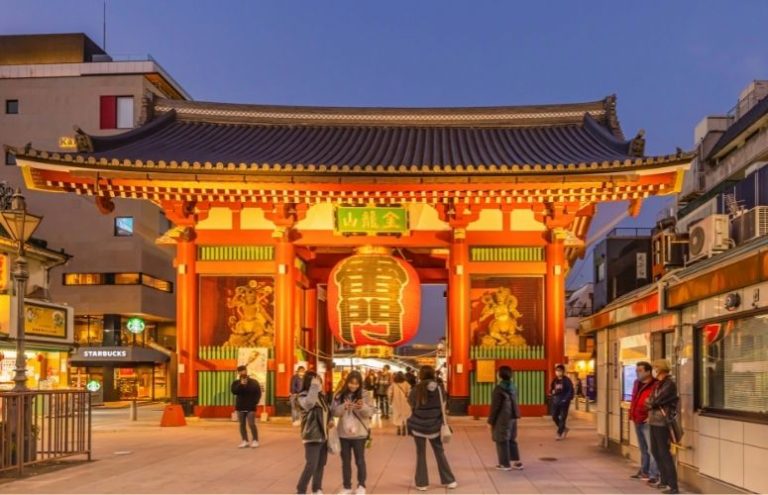
It is also called Fujin Raijinmon, which means ‘The gate of the gods of Thunder and Wind.’ On the east side of the gate is the statue of the wind god, and on the west side is the statue of the thunder god, are placed.
After passing the gate, if you look back, you will see two different statues; on the right is the goddess Kinryuzan or the mountain’s Golden dragon, and on the left god Tenryu or Heavenly dragon.
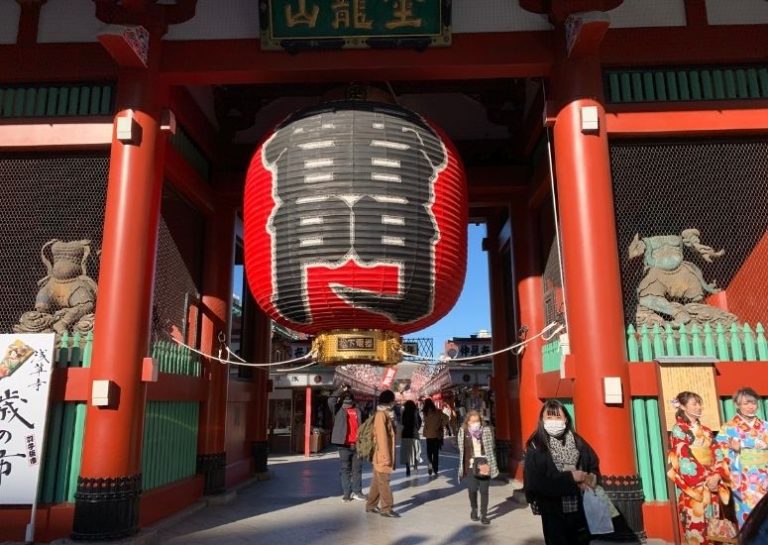
However, these protectors’ dragons are different from the other two protectors, Thunder and Wind’s gods. Dragon gods protect people in the sea and take care of the harvest. They bless their devotees from Heaven and protect their devotees as mountain walls from their enemies.
In short, these four protectors protect the Sensoji Temple and its devotees.
In the center, the giant lantern of the Kaminarimon is an iconic symbol of Asakusa. It weighs 700 kilograms; it’s 3.9 meters in height and 3.3 meters wide.
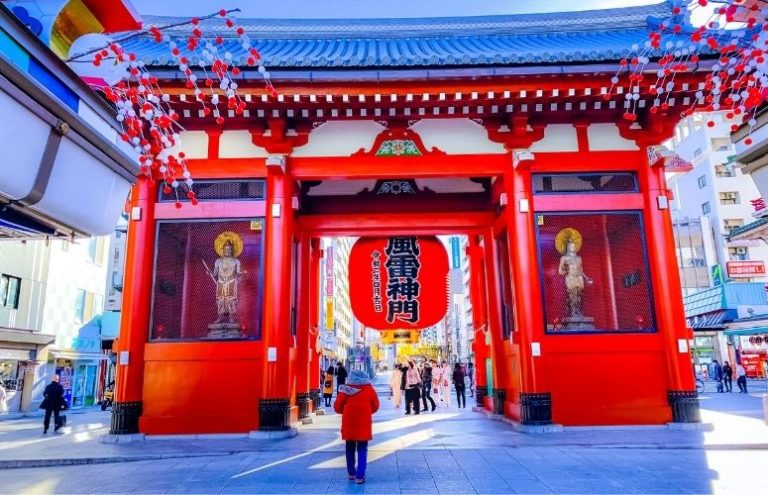
Taira no Kinmasa, a military commander of Musashi province, built Kaminarimon Gate in 941. However, the gate was reconstructed several times because of fire and air raids. The current structure was built in 1960.
But the lantern was made by Kyoto Takahashi Lanterns, and the company takes care of it. The lantern is raised during the Sanja Matsuri festival to make way for the portable shrines through the gate.
b) Hozomon Gate:
Hozomon Gate is the second and most magnificent gate of the Sensoji Temple. It is the most beautiful gate of the temple.
But before you reach the Hozomon Gate, you have to go through the most beautiful shopping street in Tokyo, called Nakamise Shopping Street (Nakamise Dori).
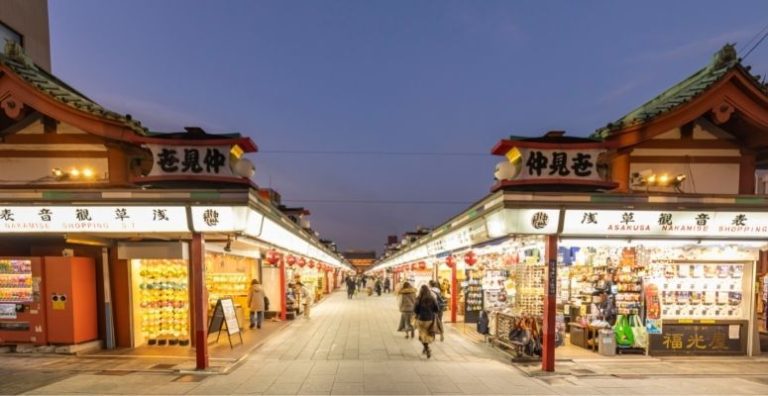
The space between Kaminarimon and Hozomon gate in Sensoji Temple is Nakamise Shopping Street, where 35 shops on the west and 89 shops on the east are found. It is a souvenir street. This property is part of the temple.
You will find a two-storied giant gate at the end of the street, and that is Hozomon Gate. It is 22.7 meters high and 21 meters wide.
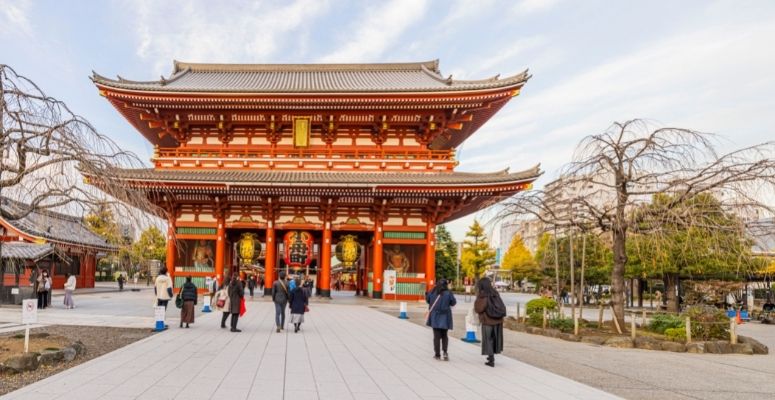
Taira no Kinmasa built it in 942. In 1631, Hozomon Gate was burned, and Tokugawa Iemitsu made it again in 1636.
Besides, during the Tokyo air raids in 1945, the gate was burned, but in 1964, a steel-reinforced concrete structure was made, and the cost was ¥150 million, donated by Yonetarō Motoya.
The first story contains three giant lanterns, two statues, and two large straw sandals.
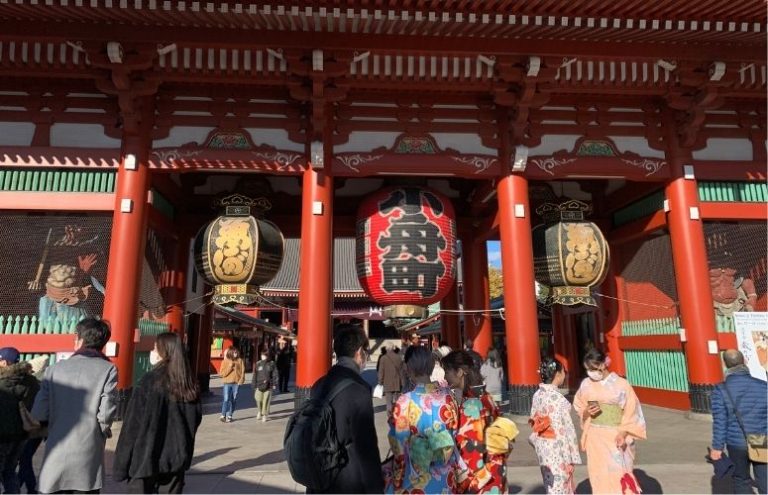
Among the three lanterns, the red lantern hanging in the center weighs 400kg, with a height of 3.75 meters and a diameter of 2.7 meters wide.
On either side of the red lantern, two 2.75 meters high copper lanterns weigh 1000kg each.
Two statues are Nio deities, Buddha’s guardian deities, each 5.45 meters tall. However, at the back-faced of the gate, the two straw sandals weigh 400 kg each and are 4.5 meters long and 1.5 meters wide.
The second story contains a store where Sensoji’s treasures are kept, including a copy of Lotus Sutra, a Japanese National Treasure.
c) Main Hall (Hondo):
The main Hall, Hondo, is the main Sensoji Temple. It is the oldest temple in Tokyo. The temple is not only massive in shape but also more beautiful than any other surrounding buildings.
The visiting hour of the hall is from 06:00-17:00. If you want to go inside the temple, you have to take permission from the guards. You will see some fantastic artwork painted even on the ceiling and upper part of the walls.
If you have any questions about something you can ask the guards and they are happy to give you information.
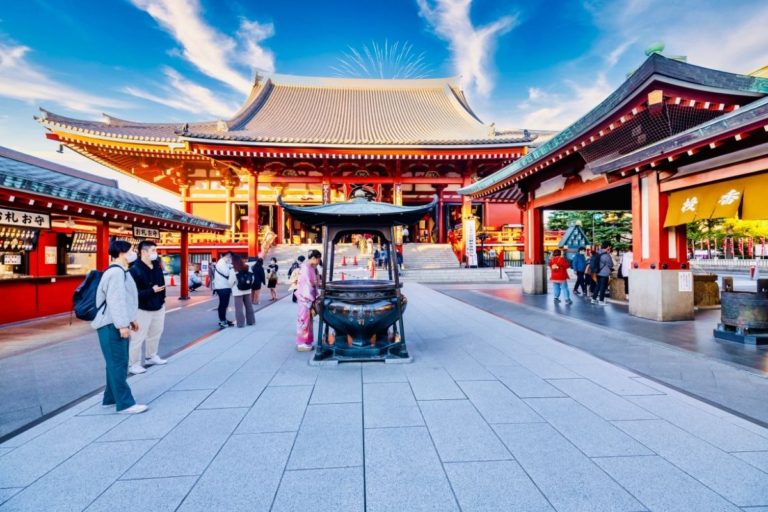
Most importantly, there are two rows of Omikuji or lucky charms ticket counters in front of the temple, where visitors can test their luck by purchasing the lucky charms.
There are different options for buying charms. If you need help and do not know what to do, you can ask someone at the counter or look at the Omikuji purchasing board’s advice on buying.
Besides, people can wash their hands and mouths on the left side, between the Omikuji counter and the temple at the purification spot.
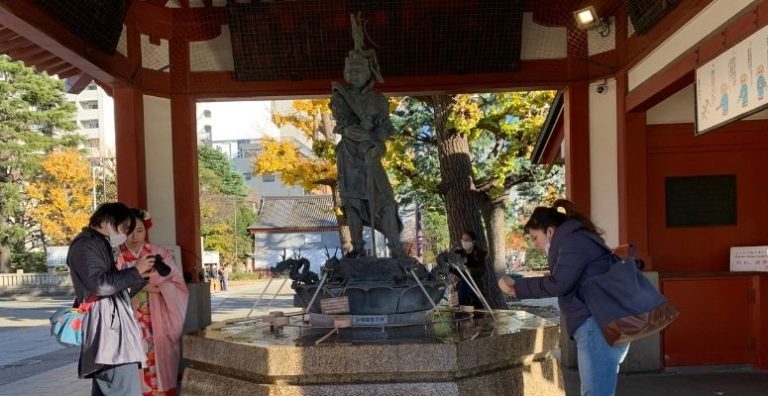
Because of its structure, the bronze dragon statue of the purification is one of the Sensoji Temple attractions.
In addition, in the middle of the open space in front of the temple and Omikuji counters, there is a large incense burner where people purify them using smoke and ache.
The devotees make crowed around the incense burner to purify themselves.
2) Five-storied Pagoda:
The five-storied pagoda was built-in 942. Unfortunately, the pagoda was burned and destroyed several times. It also burned in Tokyo air raids in 1945 but was rebuilt in 1973.
Besides, it is made in such a way that the pagoda is illuminated to highlight its beautiful vermilion color at night, but it is different during the day.
The pagoda’s height is 53.32 meters, which is a similar height to an 18 storied building. Finally, the relic of Buddha is placed.
However, even though its beautiful shape and color impressed people, it has a sad history behind it. It is actually a graveyard of thousands of families, considered a holy place. As a result, it remains closed to visitors.
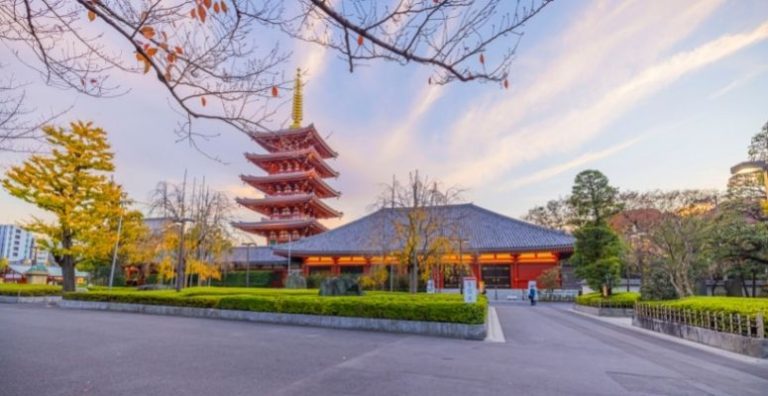
Those who died during the Tokyo air raids in 1945 in Asakusa are resting here. But if you have someone from your family line, you can go inside and pray.
The five-storied pagoda teaches everyone who visits the Sensoji temple to learn that war should be avoided because war cannot bring peace.
3) Halls:
The Sensoji temple has several small halls, including the Main Hall (Hondo). However, except the Main Hall, Yogodo Hall, Yokushido Hall, Awashimado Hall, Zenizuka Jizo-do Hall, Chingodo Hall, Bentendo Hall, and Komagatado Hall are the most famous.
Yogodo Hall is famous for its historical fact; after the two brothers caught a Statue of Bodhisattva Kannon, the goddess of mercy, in their fishing net, the landlord dedicated a house, where they placed it to display.
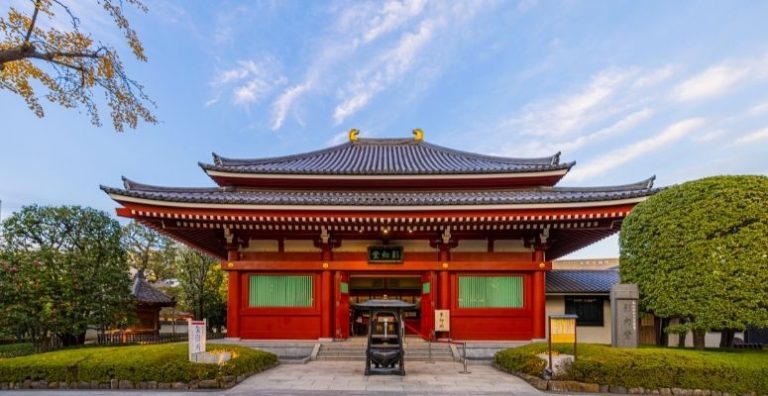
However, seven years later, a priest, Shokai Shonin, built Kannon-do Hall, nowadays known as the Sensoji temple.
Yakushido Hall is at the back of Yokodo Hall. It is famous because of the Buddha Yakushi-nyorai enshrined in the hall.
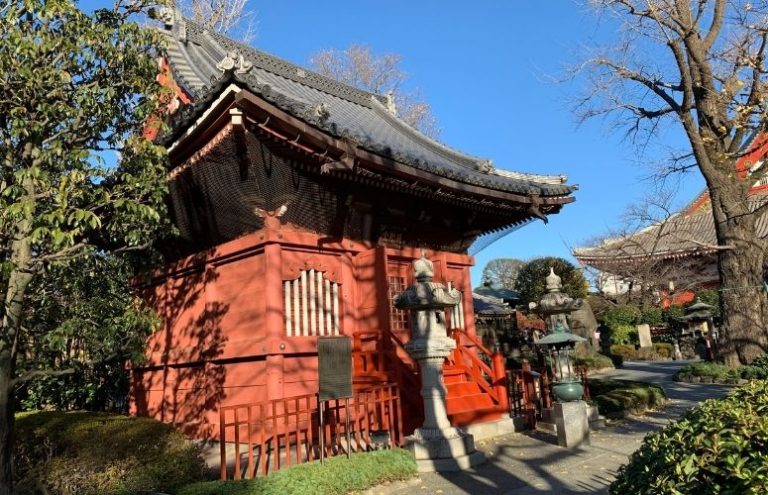
Awashimado Hall is located after the Yakushido Hall, where Awashima-myojin and Amida-nyorai are enshrined.
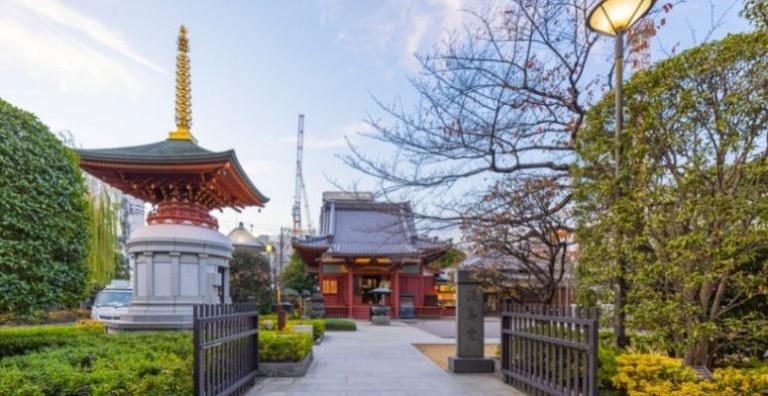
Zenizuka Jizo-do Hall is on the north side of Awashimado Hall. People pray here for their prosperity in business.
Tanuki enshrines in the Chingodo Hall. Tanuki is a raccoon dog figure in Japanese myth, worshipped as a Fire God.
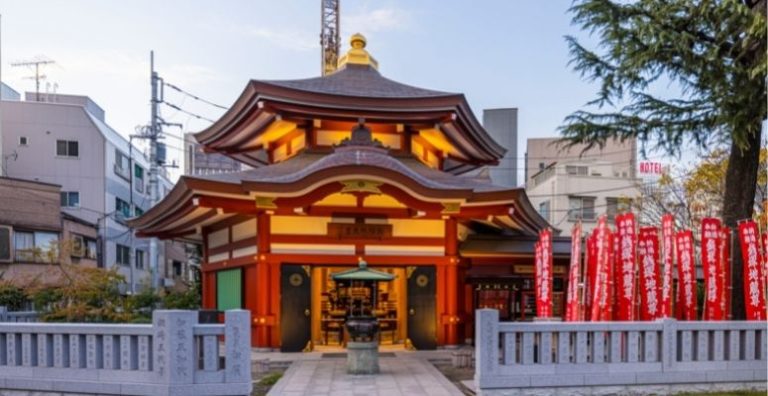
Bentendo Hall is located southeast of the Main Hall. The Benzaiten goddess enshrines here and is considered one of the seven Fortune’s Gods.
Komagatado Hall is situated on the Sumida River’s right side, where pilgrims first arrived by ferry for the Sensoji temple. They used to pay their respect here first before coming to Main Hall.
Bodhisattva Bato-Kannon enshrines here, which depicts a horse head.
4) Asakusa Shrine:
Asakusa shrine is on the left of the Sensoji Temple’s Main Hall. It was built in 1649 by Tokugawa Iemitsu and stands only a few dozen meters to the left of the temple’s main building.
Most importantly, it is a part of the Sensoji temple. Buddhism and Shintoism go hand in hand in Japan. Therefore, it is common to see a shrine on temple premises.
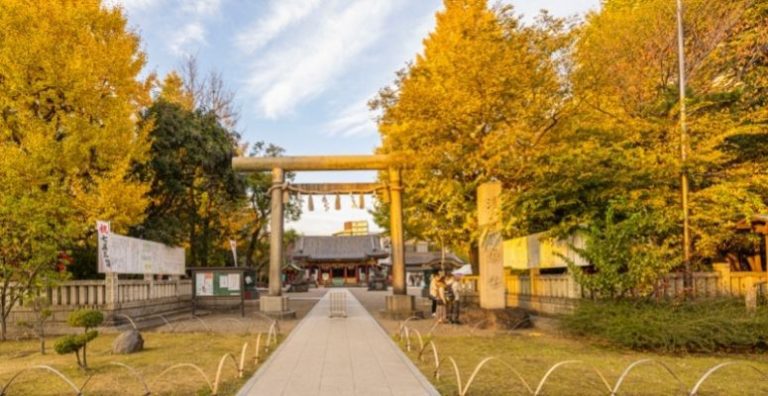
For example, Taito City‘s Asakusa Sensoji Temple, Adachi City’s most significant Buddhist temple Nishi Arai Daishi and Setagaya City’s famous temple Gotokuji are not exceptional. Every temple contains a small shrine. But the shrine in Sensoji is more significant than those shrines.
However, the Asakusa shrine is not simple. It is a big shrine with every element of a shrine, even though it is part of the Sensoji Temple.
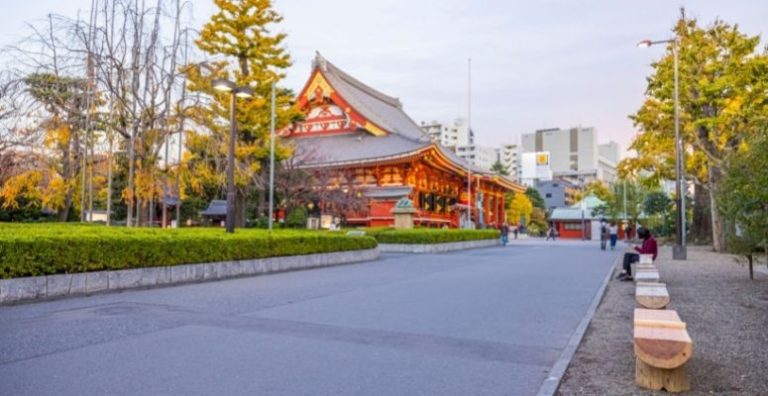
In short, it has a main Tori Gate, a few monuments, a main hall, a water purification house, and a big compound.
Moreover, it is one of the main attractions of the Sensoji Temple.
5) Monuments:
Sensoji Temple has several monuments and statues in its compound. Some of them are historical heroes, and some of them are temple-related priests.
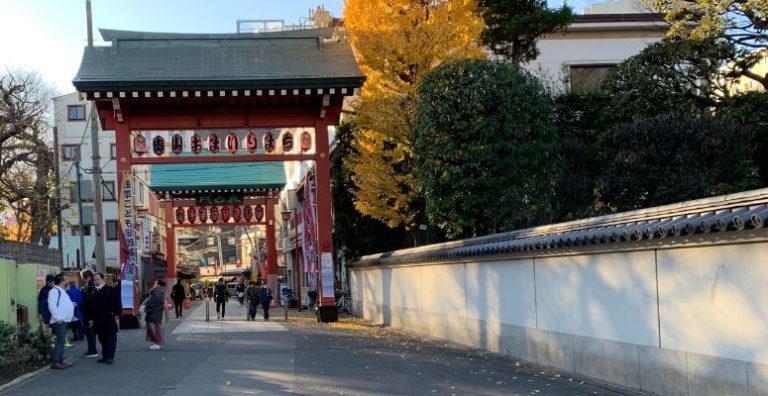
Almost every hall contains some monuments, including the Asakusa shrine. However, the most prominent memorial in Sensoji temple is located nearby the Okuyama Gate.
Most of the tombs or memorials that belong to these are very important in Japanese history. For instance, priest Toda Mosui was born as a prince but became a Buddhist priest; his grave is here.
Besides, among the several monuments, one fascinating Edo Period monument is called ‘Shin Okuyama.‘
Some of the great monuments are also located in front of the Awasima-Do. Among the many, one signboard conveys a peaceful message to the future generation.
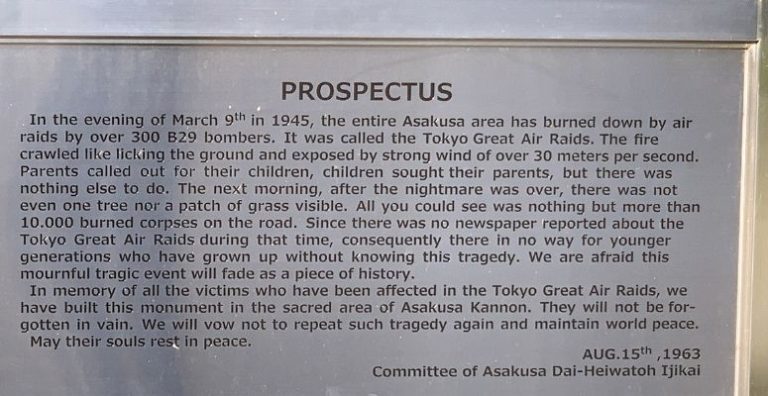
However, the fascinating memorials and monuments are before the Yogodo Hall. There is a Seated Bronze Statue of Bodhisattva, a stone lantern of Rokujizo, built-in 1146, and a few giant monuments.
In short, several beautiful monuments and fantastic sceneries are located here, such as tiny bridges and beautiful rocky streams.
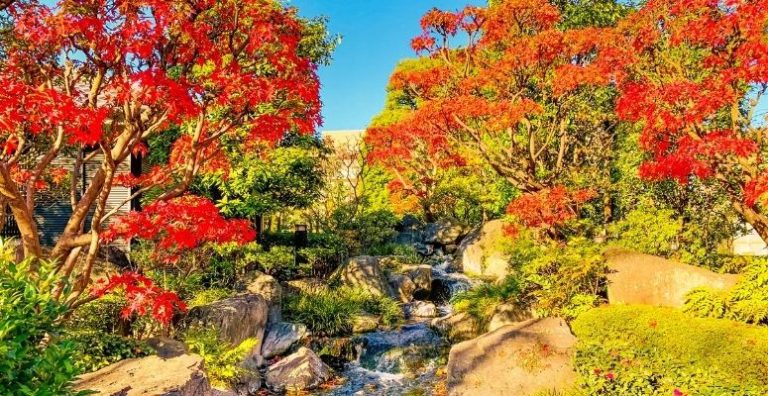
It is one of the fantastic areas of the Sensoji Temple, indeed.
6) Festivals:
Asakusa is the only traditional Japanese Tokyo area, rich in Japanese culture, which millions of tourists visit every day and enjoy their time. But, at the same time, it is equally popular with the native Japanese too.
During the Asakusa Sanja Matsuri festival and Hatsumode, hundreds of thousands of people visit the temple from different parts of Japan for religious purposes.
Hana Matsuri at Sensoji Temple is one of the beautiful festivals. It takes place in early April every year.
The event lasts weeklong in the temple. Besides, many tea stalls, shops, restaurants, and toy shops are in front of the temple’s premises.
7) Extra information:
Sensoji Temple is the center of the Asakusa District. There are numerous hotels, restaurants, bars, and shopping streets. But most of the time, the most popular restaurants, hotels, and bars remained fully booked.
Booking online means you do not have to worry about your restaurants or hotels.
Besides, several tourist-related activities exist in Asakusa, such as the Asakusa Group Tours, Walking Tour, Asakusa Food Tour, and Bar hopping Tour. You can book here.
Simultaneously, if you do not have any specific plan and want to roam in the Asakusa area and Sensoji Temple to enjoy the town, you do not need to book anything. You can enjoy the town and take your lunch or dinner at any restaurant you get a chance at.
The most interesting things to do in Sensoji are eating local street food and relaxing on the temple grounds.
8) Surroundings:
Among the numerous surroundings, Asakusa Culture Tourist Center, the Japanese Garden behind the five-story pagoda, the vivid red Azumabashi Bridge, Asahi Beer Tower, Hoppy Dori, and Sumida Park are worth mentioning.
Asakusa Culture Tourist Center is in front of Kaminarimon and has an observation Deck. You can take beautiful landscape shots of Nakamise Street from the observation Deck. It’s always free.
Japanese Garden behind the 7-story pagoda is only opened on special occasions. The garden is also one of the beautiful places for photo shoots.
But remember to take a shot at the Main entrance of the main buildings. The scenes behind look wonderfully beautiful. However, you get excellent photos from Nishi-Sando-dori during the Cherry blossoms.
9) Street Food:
While you’re at Nakamise Street, you can try the best food of Asakusa Kibidango, Imo yokan, and Ningyo yaki. These three kinds of Asakusa food are world-famous.
Moreover, it’s a hub of local food culture and authentic Japanese souvenirs spot in Tokyo, which tourists love visiting every day.
10) Best time to visit:
Visiting Sensoji is always fun. However, the most fun visiting time of the temple is during the Festivals. You can even see beautiful Cherry Blossoms on the temple grounds.
Admission: Free
Sensoji Temple Opening hours:
April -September: 6:00 to 17:00
October- March: 6:30 to 17:00
The main hall of Sensoji Temple is open every day. However, the opening and closing hours depend on sunrise and sunset.
Access:
Station: Asakusa Station
1)Tokyo Metro Ginza Line or the Tobu Skytree Line or Tsukuba Express.
A 5-minute walk from Asakusa Station (Exit 3)
2) Toei Subway Asakusa Line
A 7-minute walk from Asakusa Station (Exit A5)
Phone number: +81-3-3842-0181
Address:
Sensoji Temple, 2 Chome-3-1 Asakusa, Taito City, Tokyo 111-0032, Japan
Official Website:
Book hotel in Asakusa:
